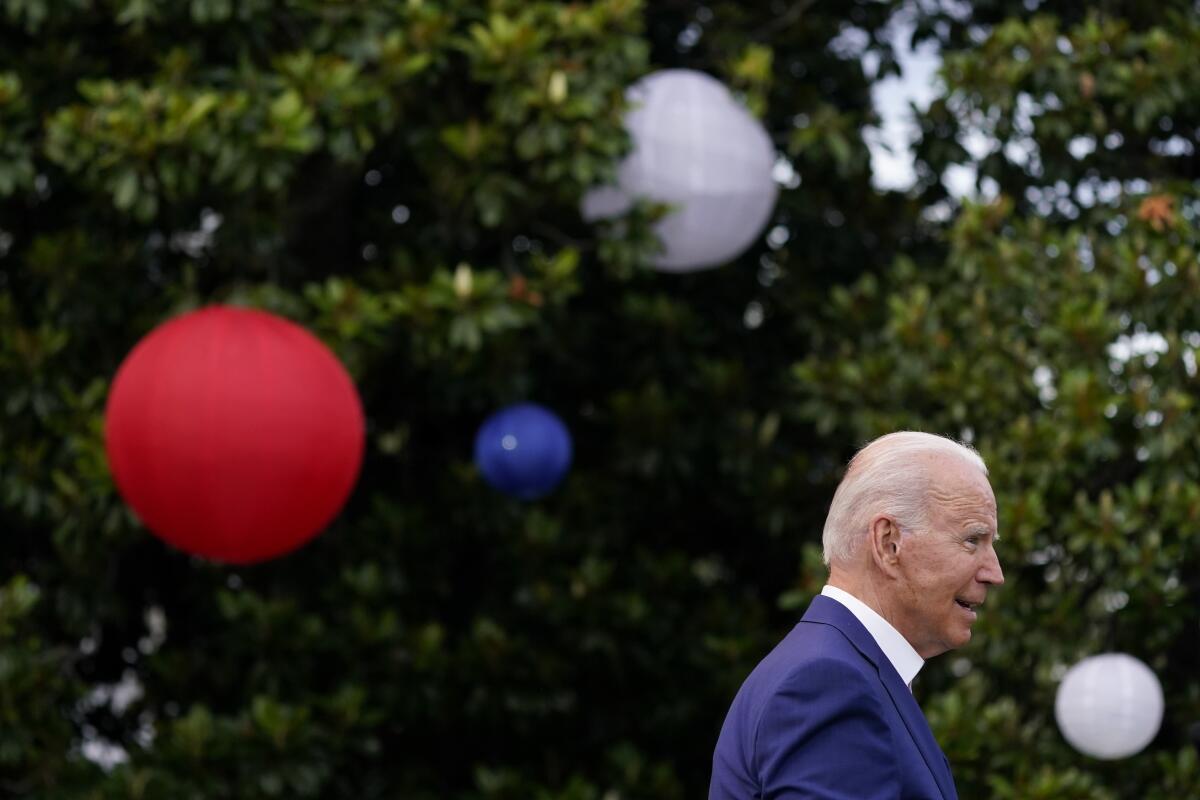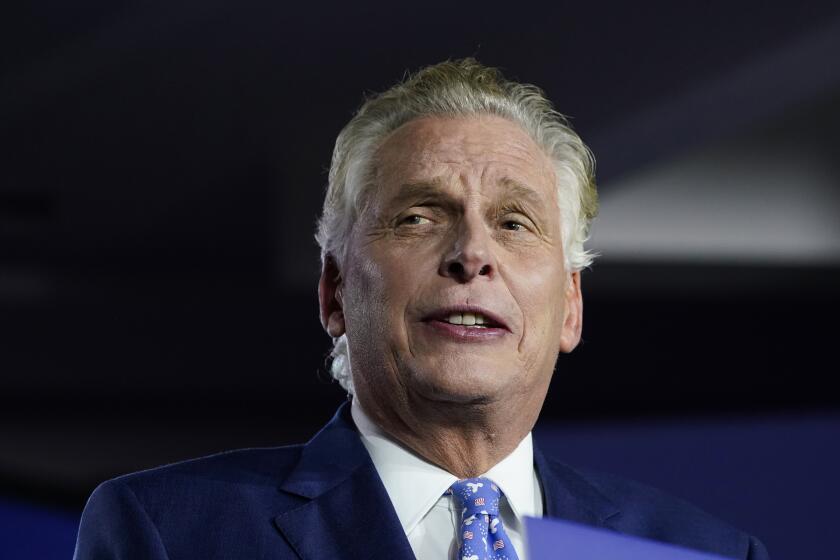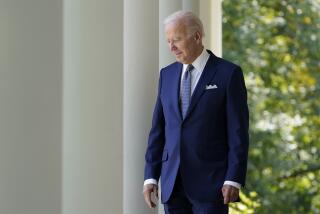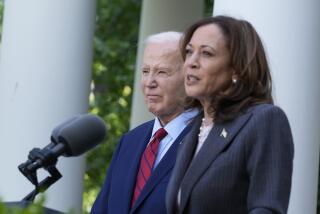Column: Biden’s in deep trouble. He can still bounce back

- Share via
WASHINGTON — When Joe Biden ran for president in 2020, he had all the advantages of a nonincumbent in a year when everything had gone wrong.
Biden waged a careful, disciplined campaign, built around a simple message: He would end the pandemic, rebuild the economy and restore normalcy. After the chaos of the Trump years, that was enough.
Governing has been more difficult. The pandemic, fueled by the Delta variant of the coronavirus, didn’t end. The economy’s recovery has come with worrisome inflation, shortages and supply chain problems. In public opinion polls, a large majority of Americans say they think the country is heading in the wrong direction.
Looking at all three big elections this fall, not just one or two, helps illustrate the depth of Biden’s current problem — but also a key GOP weakness.
Small wonder, then, that Biden’s popularity has tumbled so precipitously. His job approval rating in the Gallup Poll has fallen 14 points, from 56% in June to 42% in late October — making him less popular at this point in his tenure than any other recent president, with the singular exception of Donald Trump.
“We’re in a bad political, economic and COVID environment,” Biden’s pollster, John Anzalone, told me last week. “Sometimes it takes a new year to push the reset button.”
A Republican pollster, David Winston, elaborated on the theme. “Expectations were high after [Biden’s] election,” he said. “People expected COVID to be over; it isn’t. Voters thought they were electing normalcy, but that’s not what they’re getting.”
“Biden’s problem isn’t just that several things have gone wrong; it’s that nothing seems to be going right.”
Presidents often run into trouble during their first year in office, and some manage to recover. Ronald Reagan took the economy into a deep recession in 1981 and lost 26 House seats the next year, but once the economy recovered he was reelected by a landslide. Bill Clinton presided over a disastrous first year and lost control of Congress in 1994, only to master the art of bipartisan negotiation and win reelection in 1996.
Biden’s challenge is finding his own path to recovery — a way to bring about that “reset” his pollster talked about.
Step one is fixing the two big problems the president promised to address in the first place: the pandemic and the economy. Biden has focused on those priorities, but his progress has been slower and bumpier than many voters expected.
After months of delay, the House of Representatives gave him a boost on Friday by passing his $1-trillion infrastructure plan in a bipartisan vote. The president was smart to announce that he plans to invite both Democrats and Republicans to a signing ceremony, a graceful way to remind voters that he managed to persuade members of both parties to cooperate for once.
But he still needs House and Senate Democrats to pass the other cornerstone of his legislative agenda, a $1.75-trillion social spending bill that isn’t bipartisan at all.
Meanwhile, there’s something else he can do: Look for kitchen-table issues he can solve, or at least show voters that he’s trying.
People are unhappy about rising gasoline prices. Biden spent time in Europe last week urging oil-exporting countries to increase production. It was an incongruous action on a trip ostensibly focused on climate change, and the oil producers didn’t immediately respond — but it was still smart politics.
Similarly, Biden and his aides have announced several actions aimed at easing supply chain problems, including keeping the ports of Los Angeles and Long Beach open 24 hours and fining shippers who don’t move containers fast enough. Those moves alone aren’t likely to solve the problem, but if the bottlenecks ease, the president will be able to point to something he did to help.
One more suggestion: Underpromise and overdeliver. Biden has too often done the opposite, prematurely declaring victories. That habit has contributed to the erosion of his standing in the polls.
On July 4, for example, Biden held a White House celebration of what he thought was the impending end of the COVID pandemic, a moment he described as “declaring our independence from a deadly virus.”
The Delta variant soon surged, robbing the president of his victory and throwing the economy for a loop.
On Friday, after the Labor Department released strong job numbers for October, the president declared victory again and said his policies deserved credit.
“Our economy is starting to work,” he said. “This recovery is faster, stronger, fairer and wider than almost anyone could have predicted.”
He acknowledged that inflation was still a problem, but said his social spending bill “will lower inflationary pressure” by holding down the prices of child care, healthcare and prescription drugs. In an economy with labor shortages, he’ll need a dose of luck for that prediction to come true.
Despite those problems, a Biden recovery is still possible, even in a deeply polarized country.
“Republicans have decided that the country is going to hell in a handbasket because Biden and the Democrats are in charge, but independents and especially Democrats are driven far more by events,” GOP pollster Whit Ayres said.
“If COVID gets under control, the economy starts humming, inflation comes down, and Congress actually passes part of Biden’s agenda, then those voters will become more positive about the direction of the country.”
Biden has waged comeback campaigns before. His 2020 presidential campaign was declared dead more than once; he bounced back to win the nomination and the election.
He and his aides say they have a straightforward plan: to campaign on “one of the strongest Democratic messages ever,” Anzalone said.
Biden’s instincts are to put his head down and plow ahead. It’s worked for him before. We’ll see if he can defy the odds again.
More to Read
Get the L.A. Times Politics newsletter
Deeply reported insights into legislation, politics and policy from Sacramento, Washington and beyond. In your inbox twice per week.
You may occasionally receive promotional content from the Los Angeles Times.












